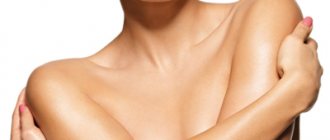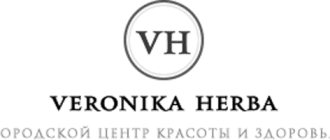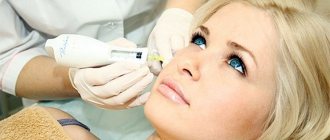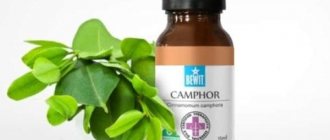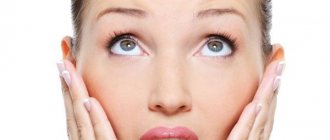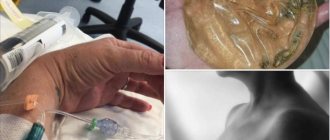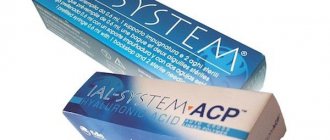Modern injection cosmetology promises to quickly return the face to its “youthful” characteristics without pain or undesirable consequences. But before you decide to take your first beauty injection, it would be nice to have an idea of what is on the market today.
We decipher the meaning of the terms, find out the mechanism of action of each injection, and look for a suitable technique for ourselves personally.
When we talk about beauty injections, it is important to understand what exactly is hidden behind each of them. Yes, in fact, any beauty injection is aimed at correcting signs of age. But there are a lot of nuances. Let's go over the basic injection techniques.
Botulinum toxin
Botulinum therapy is one of the most popular techniques in cosmetology. Currently, six drugs are registered and approved for use in Russia. They all contain botulinum neuroprotein and differ slightly from each other - for example, in molecular weight and stabilizing additives. The most popular drugs today are Botox (USA), Dysport (France), Relatox (Russia), Xeomin (Germany), Botulax (Korea) and Lantox (China).
Botulinum toxin injections are used to calm excessive facial expressions of a particular muscle on the face. The choice of drug is at the discretion of the cosmetologist. It largely depends on which of them he is better at. After all, everyone has their own characteristics and dosages. For example, I know all the options of botulinum toxin, but I really like to work with Botox, as well as its excellent Korean analogue, Botulax. In some cases, I prefer Relatox, especially for men and women with a masculine facial structure.
For people of a certain profession (for example, singers or actors), Xeomin will be preferable. It does not stay in tissues for so long, but it is able to maintain facial expressions.
Important: botulinum toxin does not work on the skin, but only limits muscle function!
And we are not talking about muscle atrophy. The drug breaks the neuromuscular connection. That is, the muscle is supplied with blood, functions normally, but does not contract. The facial muscles are attached to the skin and begin to pull it more strongly with age. Since the level of collagen and elastin (the main structural proteins of the dermis that provide the skin with elasticity and tone) decreases with age, expression wrinkles form. If the wrinkle has entered the static phase, that is, visible in a calm state, botulinum toxin will not solve this problem, which is what many patients are often mistaken about. To correct creases, you will need to fill wrinkles with hyaluronic acid and use hardware techniques. Botulinum toxin can relax the muscle and tighten the skin, making wrinkles less noticeable. Many patients wait until a certain age to get botulinum toxin injections for the first time and miss out on time. I believe that botulinum toxin is a drug for young people (up to 40 years old), which, as you use it, will stop you from frowning or squinting. The best way to treat wrinkles is to prevent them.
When can you do Botox?
Is it possible to inject Botox during menstruation?
Can. You just need to take into account that during menstruation, blood clotting decreases and pain sensitivity increases. So getting Botox can be a little more unpleasant. And the risk of getting bruises at the injection sites is slightly greater.
If your schedule allows, postpone the procedure for a week.
If it’s difficult to correspond or there’s little time left, do Botox calmly; periods don’t affect the result.
Leave 2 weeks for staging reaction and possible correction.
How often can Botox be done? How often can I inject Dysport?
Once every 3 months or less is considered a safe interval for botulinum toxins. More details. What can you be afraid of if you inject more than 4 times a year? Is it no longer safe?
- There is no danger to health. The main thing is not to exceed the recommended doses of the toxin during each procedure, and in cosmetology they are VERY far from the maximum.
- With each procedure there is a risk of developing resistance to the drug. Then Botox will stop working in your body. If you prick rarely (up to 4 times a year), then the chance of getting resistance is scanty. But when the pause is less than 3 months, it begins to grow noticeably.
Of course, it's not that simple. And the dose of the drug matters, and the mechanism of resistance is not completely clear and there are still questions. We have patients who have been injecting Botox every 2 months in small doses for years, and everything is fine. But this is unofficial, under their responsibility and there are few of them - not enough for statistics.
Is it possible to inject Botox during pregnancy?
Officially, it’s impossible.
In our opinion, it is NOT necessary to inject Botox during pregnancy.
But if it turns out that you were already pregnant when Botox was administered, you don’t need to do anything. Everything will be OK. will not do anything bad to the child or mother .
There is no need to inject Botox into pregnant women for 2 reasons:
- The hormonal and immune background changes. The content of micro- and macroelements is not standard. Botox may not work or may work differently than usual. You could end up wasting money or walking around with drooping eyebrows for weeks. Why does the expectant mother need negative emotions?
- The body of a pregnant woman is a delicate thing, there are plenty of different unusual sensations - not always pleasant. Changes can come quickly. Yesterday everything was fine, but today the observing gynecologist has to solve a difficult problem. And if the day before you took a toxin and it gave you strange sensations, this could mislead the doctor, and he could make the wrong decision. And who needs it?
Therefore, we are postponing Botox, Dysport and all other injections for now. We give birth, feed, wait a month and a half - and you’re welcome!
Is it possible to inject Botox while breastfeeding?
It is forbidden . Officially, all botulinum toxins have a prohibition on use during lactation.
Unofficial - never tried 
If you really need to urgently inject Botox, stop breastfeeding for 2-3 days after the procedure. But in general, it’s better to wait until the feeding is over for +1.5 months and then calmly inject whatever you want.
Is it possible to inject Botox in the summer?
Can.
Botox can be done at any time of the year.
We don’t understand where the rumor came from that doing Botox in the summer is useless. Maybe because of the heat...
But you can also inject Botox in the summer when it’s hot. The toxin is stored in the refrigerator. After the injection, he is already in the body, and there the temperature is almost constant. Of course, you don’t need to immediately go into the sun to sunbathe without a hat.
After the injection, he is already in the body, and there the temperature is almost constant. Of course, you don’t need to immediately go into the sun to sunbathe without a hat.
By the way, about summer. Sometimes girls come before a wedding in the spring-summer and ask to “turn off” the forehead and bridge of the nose. So that if there is sun on your wedding day, don’t squint or frown in “ceremonial” photographs.
Is it worth doing Botox before the sea?
From the point of view of the effect of injections, it is possible . You don’t need to go sunbathe right away, but after a couple of days everything is possible.
But there are a few things to consider.
- There may be non-standard reactions. Especially if you are injecting Botox for the first time. And here it is better to at least be in touch with the doctor. A video is better so that the doctor can evaluate facial expressions. As a last resort, send a photo.
- Correction may be required. The optimal period for it is 2-3 weeks. Then you may not need to adjust it. Therefore, it is better if you return from your trip in time.
At what age can you get Botox?
From childhood. Cerebral palsy - have you heard this name? It is treated, including Botox and Dysport (it is not curable, but the drug provides some respite for several months). So there are practically no age restrictions. Only the indications are different and the doses are many times higher than in cosmetology.
If you are going to fix wrinkles, then you are definitely not 3 years old - Botox is already possible.
Botox after antibiotics
Modern antibiotics do not last long in the body; within a day or two after the last dose, there is nothing left.
But it's not just about antibiotics. They are usually prescribed for a reason.
Acute infectious diseases in themselves are contraindications to Botox.
Therefore, since there was a reason to take antibiotics, you need to wait for a COMPLETE recovery, and only then inject botulinum toxins. And there won’t be any antibiotics left in the body for a long time.
Antibiotics after Botox - when possible
The correct answer is when necessary . Antibiotics are not prescribed JUST SO! Therefore, if you suddenly get sick shortly after Botox, the main thing is to recover! That's why:
- We listen to the attending physician - if necessary, then necessary.
- You can always choose an antibiotic that does not affect Botox - the vast majority of them do.
Botulinum toxins interact with a small range of antibiotics. Botox was officially not recommended in 4 groups:
- aminoglycosides
- macrolides
- tetracyclines
- polymyxins
For younger botulinum toxins, the list has been shortened. In Xeomin, only aminoglycosides (gentamicin, kanamycin, etc.) are not recommended. And the doctor will always find something to replace aminoglycosides with.
And this is not because Xeomin is somehow radically different from Botox. He just received registration recently, but Botox and Dysport have been around for a long time. Statistics on their use have accumulated, which has allowed initial fears about “bad” interactions with antibiotics to be eliminated. But in order to change even a word in the drug passport, you need to register it anew, and this is time-consuming and expensive.
The interaction mainly comes down to the fact that antibiotics can enhance the effect of botulinum toxins, but this is observed quite rarely.
Botox for the face contraindications briefly
- acute infections and other serious diseases - incl. herpes and any diseases with fever
- inflammatory skin diseases in the injection area
- disorders of neuromuscular transmission - myasthenia gravis, myasthenic-like syndromes, amyotrophic lateral sclerosis, etc.
- pregnancy, lactation
- first 6 weeks after blepharoplasty
Contraindications for Botox are discussed in detail here >>
Is it possible to do Botox with high blood pressure?
Botulinum toxins do not affect blood pressure in any way. But the procedure can have an effect!
Firstly, it’s scary, especially the first time. Secondly, the sensations can range from slightly unpleasant to very painful. The injections themselves (even with a small needle, but in the face!) mean a certain amount of stress, the release of adrenaline into the blood and an increase in blood pressure, albeit short-term.
Therefore, the fact of high blood pressure is not a contraindication if it is normal blood pressure. Some people already “die” at 135, while others don’t feel 170. In any case, we measure the blood pressure for hypertensive patients before the procedure. Next, we look at the indicators and well-being.
The patient must be prepared to tolerate a rise in blood pressure of 10-20 mm Hg, especially if he has never done our injection procedures and is very afraid for the first time.
Biorevitalization and mesotherapy
These techniques have certain similarities. Both are aimed at replenishing the skin’s hydro reserve, nourishing it, enriching it with amino acids, microelements, peptides, as well as stimulating fibroblasts that produce collagen and elastin.
After 25 years, the natural production of fibroblasts decreases, which requires stimulation with the use of various mesotherapy cocktails and biorevitalizants.
If we are talking about biorevitalization , the preparations for this procedure will necessarily contain hyaluronic acid and in the form of a gel, and the number of procedures will not exceed three, maximum five, depending on the initial condition of the skin.
Mesopreparations , in turn, may or may not contain hyaluronic acid. They are presented in liquid form, which is why they are called meso-cocktails. In addition to hyaluronic acid, they may contain vitamins, minerals, and plant extracts. Due to this, mesopreparations are widely used in therapy to solve dermatological (acne, rosacea, rosacea) and trichological problems and are used in the body, face and scalp.
Considering the realities of life in big cities, where the main wishes of patients come down to maximum effect and minimal rehabilitation, I give preference to biorevitalizants. Unlike mesotherapy, which requires more frequent courses, the gel texture of biorevitalizants allows you to get a quick effect from a small number of procedures at rare intervals. I would recommend mesotherapy to girls and boys under 25 years old, or to patients 25-30 years old with very good skin. If the patient smokes, abuses alcohol, uses solariums, or works in an air-conditioned office, then it makes sense to choose a light biorevitalizant.
Before mesotherapy or biorevitalization procedures, it is recommended to maintain a drinking regime. The effect of the procedure in this case will be much higher.
Execution Sequence
First, a more aggressive procedure is performed - botulinum therapy, after which beauty injections can be prescribed.
Sessions of hyaluronic injections can begin after 3-4 months, when the concentration of the toxin decreases and a gradual restoration of neuromuscular connections occurs. The fibers return the usual tone and the effect of the biorevitalizant will be maximum.
The ideal option is to carry out atraumatic peeling to prepare the skin for exposure. Then biorevitalization is prescribed, and after 3-4 weeks - Botox injections and repeated injections of hyaluronic acid.
This is not a universal scheme; a cosmetologist can prescribe a longer period, it all depends on the drugs used.
It is not recommended to inject the toxin and biorevitalizant on the same day; it is unknown how the active components will behave. A violent allergic reaction, hematomas, swelling and lack of the desired result are possible; rather than take risks, it is better to postpone the session. Before carrying out the procedure, the cosmetologist must study not only the medical history and condition of the skin, but also familiarize yourself with the passport of previous injection procedures.
Advice! It is better to wait until the skin is completely restored after one cosmetic procedure and only then turn to the next injection method of preserving youth.
Plasma therapy
An injection procedure in which the patient's own platelet-rich plasma is injected under the skin. Platelets play a critical role in the processes of healing and regeneration of damaged body tissues. Plasma therefore significantly increases the effectiveness of many treatments. It can be prescribed in trichological therapy to activate hair growth. In combination with other procedures, plasma therapy works great in acne and rosacea treatment protocols, providing an excellent anti-inflammatory and immunomodulatory effect. In anti-aging procedures, plasma leads to cell regeneration, renewal of collagen-elastin fibers, evens out skin tone and significantly improves its quality.
Fillers
Fillers are used to correct age-related changes. Fillers based on hyaluronic acid are more durable. For example, the gel contained in biorevitalizant is destroyed no later than a week. A gel based on hyaluronic acid for contouring will stay in the skin for at least a month. It depends on lifestyle, as well as on concomitant diseases. For example, with hypothyroidism, the activity of the enzyme hyaluronidase, which destroys hyaluronic acid, is increased. With this disease, the effect will not be as long lasting.
We can roughly distinguish three types of fillers.
1. Softer fillers are suitable for filling superficial wrinkles (forehead, crow’s feet in the corners of the eyes, small nasolabial wrinkles, slight hydration of the lips), as well as for bioreinforcement - creating a hyaluronic mesh on the face, tightening the skin.
2. Medium-density fillers are recommended for working with “rings of Venus” (wrinkles on the neck), filling nasolabial folds, contouring lips, lifting the corners of the mouth, and also for moisturizing the earlobe - a rather rare but sought-after procedure for patients over 45 years of age.
3. Hard fillers are used to enlarge cheekbones, chin, jaw angles - in short, to sculpt the face and accentuate certain areas on the face.
Efficiency comparison
Each procedure has its own special effect on the skin and has a whole list of advantages and disadvantages. The difference in effectiveness of each method is detailed in the tables.
| Botulinum therapy | Biorevitalization |
| Facelift | Evening out complexion |
| Elimination of nasolabial folds | Return of tissue tone |
| Smoothing out deep wrinkles | Smoothing out fine wrinkles |
| Elimination of strabismus | Elimination of sagging skin areas |
| Muscle relaxation | Restoration of water and electrolyte balance in tissues |
| Elimination of eyebrow asymmetry | Uniform distribution of subcutaneous fat |
| Eye shape correction, drooping eyelid lift | Face oval tightening |
Collagen stimulants
Although fillers based on hyaluronic acid also stimulate fibroblast cells to produce collagen, preparations based on calcium hydroxyapatite and polylactic acid are more powerful. These include Radiesse, Sculptra and Aesthefill. They are suitable for working with the face and neck and perfectly stimulate collagen synthesis. Typically, one or more procedures are recommended depending on the age of the patient. The drugs solve the problem of sagging skin, fine wrinkles in the face, neck and chin with a bang.
Opinion of cosmetologists
On forums, specialists share their experience in performing procedures, their effectiveness, and discuss indications for use.
A cosmetologist answers a question about the use of Botox and hyaluronic acid to correct the eyebrow area. With regular injections of the toxin, the density and elasticity of the dermis improves; the mechanism of action is not fully known. Therefore, if indicated and there are no contraindications, there is nothing wrong with the administration of botulinum toxin.
The specialist answers the user’s question whether autoimmune diseases are a contraindication to Botox injections and biorevitalization. The group of violations is extensive, so consultation with a doctor is necessary.
The cosmetologist writes about the features of Botox and biorevitalization; young, healthy skin is the result of systemic care.
Lipolitics (fat burning drugs)
Lipolitics can be direct (acting directly on the adipocyte - a fat cell - by destroying its membrane) and indirect (removing excess fluid, improving microcirculation, stimulating the process of weight loss).
The names of direct lipolytics usually contain phosphatidylcholine and sodium deoxycholate (these are bile salts). If they are not included in the composition, then this means that this is an indirect lipolytic.
For the face - a delicate area with a thin layer of fat - I definitely recommend indirect ones.
Direct lipolytic needs to work strictly in the fat layer, otherwise you can get into the muscle or get retraction (uneven effect).
Direct or combined lipolytics are indicated for the body. Here the fat layer is much better developed, and complications are unlikely.
Like any procedure, lipolytic injections also have certain nuances. For example, with the help of lipolytics you cannot lose weight, but you can only locally reduce the volume. If the skin in the treated area has lost its elasticity and sagged, you first need to improve its quality, and only then resort to lipolytics. The results of therapy will last provided proper nutrition and minimal physical activity.
Lipotherapy is perfect for fat traps that do not respond to sports and nutrition (belly, riding breeches, knees, double chin).
Recovery period
The recovery period for both procedures is also different.
When administering Botox, there is a whole list of prohibitions and restrictions that must be taken into account to reduce the risk of complications:
- Do not use decorative cosmetics for 7-9 days;
- in the first few hours you should not bend over or take a horizontal position;
- for two weeks it is prohibited to visit the bathhouse, solarium, sauna, beach, swimming pool;
- it is advisable to reduce the amount of tea and coffee consumed, give up alcohol, hot and spicy foods;
- Sleep exclusively on your back for 14 days.
With biorevitalization everything is much simpler. The face must be treated daily with antiseptics that do not contain alcohol to prevent infection from entering the puncture area. To reduce itching, burning or redness, you can brew chamomile, sage, calendula and apply lightly to the surface of the face. Rubbing or massaging areas is strictly prohibited. If complaints persist after three days, you should consult a cosmetologist for advice.
About combining techniques
Injections can be combined at intervals of time or in one syringe. For example, after fixing the frontal muscle with botulinum toxin, I invite the patient to treat wrinkles with a light biorevitalizant. This is a good strategy for patients over 25 years of age. The result is good skin hydration and a beautiful appearance.
You can also use different drugs in combination, for example botulinum toxin and meso-cocktails. This technique is called “neuromesolifting” (or the Max Adam Scherer technique). The procedure is performed using botulinum toxin “Relatox” and the French biorevitalizing cocktail NCTF135.
First, the muscles of the forehead and between the eyebrows, which often bother men, are treated with botulinum toxin. Then the entire face is treated with a meso-cocktail with botulinum toxin added to it. The procedure solves the problem of increased facial oiliness, rosacea, fine wrinkles and diffuse redness. This is not a medical procedure, but the aesthetic effect, which lasts from 4 to 6 months, will please you within 2 weeks after the procedure.
Side effects
If the procedure is poorly performed during biorevitalization or botulinum therapy, the undesirable effects are similar.
The woman complains of discomfort or burning in the area of the disorder, a bruise formed due to damage to the vessel, and tissue swelling. If an allergic reaction occurs, the symptoms are dominated by itching, rash, and redness.
If the rules of asepsis and antisepsis are not followed or ignored, a secondary infection occurs, which causes:
- local inflammation;
- increase in body temperature;
- soreness;
- general weakness;
- subsequently – the formation of purulent masses.
But each procedure also has its own distinctive features. Thus, if the dose of Botox and its analogues is incorrectly selected, facial asymmetry, drooping eyelids can occur, and a mask effect may occur—a complete absence of facial expressions. All of these complications go away as botulinum toxin is removed from the body.
Buyanov Sergey Yurievich (Expert Doctor):
The injection of botulinum toxin into the frontal lobes is often accompanied by long-term headaches, this is due to impaired nerve conduction of the frontal muscle. That is why smaller doses of Botox are used for injections in the frontal part of the skull. Accordingly, this affects the result.
After biorevitalization, tissue redness, swelling, and the formation of compactions in the puncture area cannot be ruled out.

